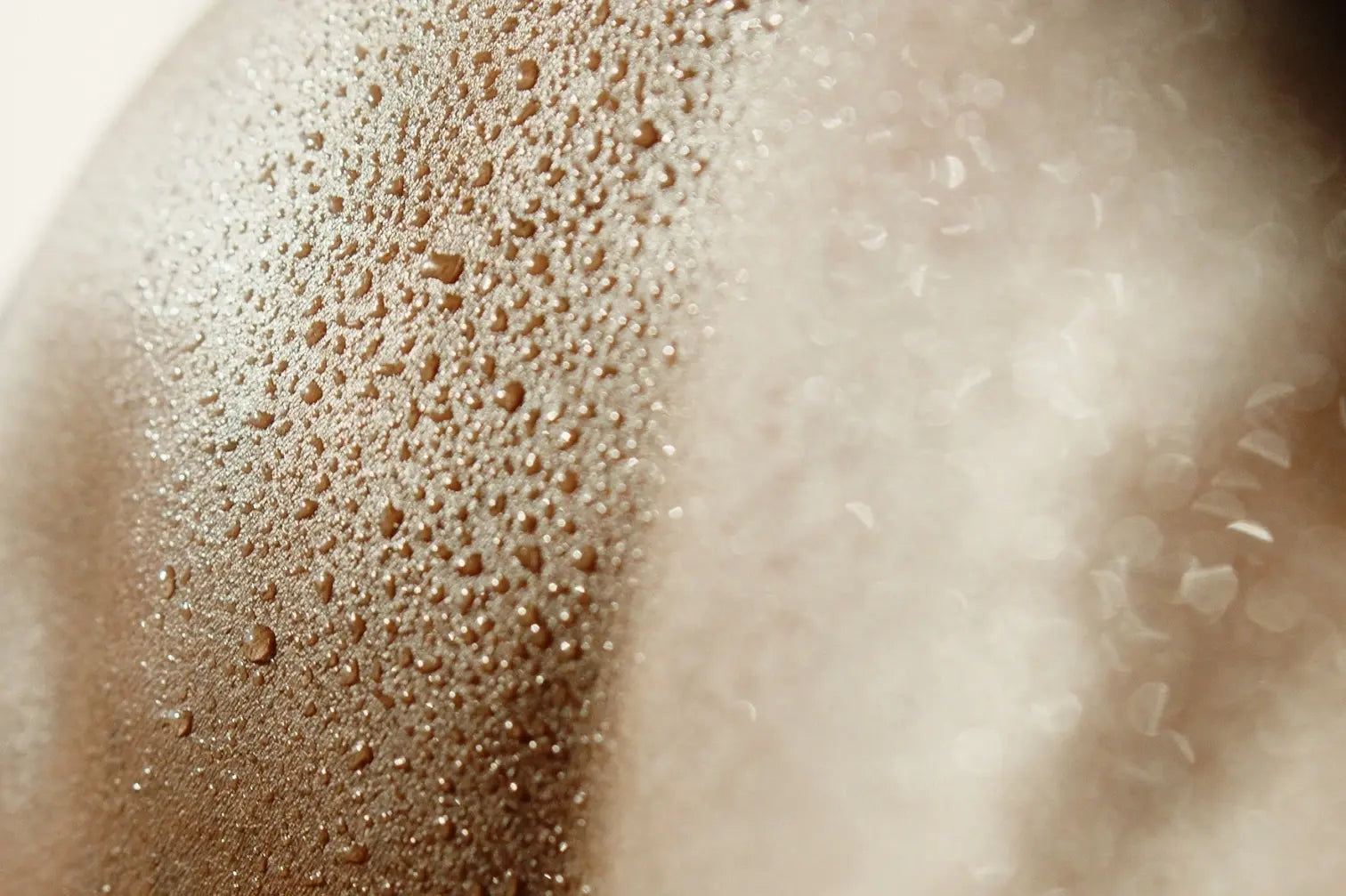What is dermis?
Sandwiched between the epidermis and the hypodermis layer, the dermis supports the functions of the other two layers as well as playing a key role in your skin's overall health and structure. Many structures exist in the dermis that impact multiple layers of the skin, including sebaceous and sweat glands, nerve endings, lymphatic vessels, and hair follicles. 1 Because the dermis hosts these functions, it is the thickest layer of your skin.
Functions of dermis
-
Support the skin’s structure: As the thickest layer of the skin, one of the main roles of the dermis is to structurally support the entire skin. The dermis is made of a network of elastin and collagen
fibers that are bound tightly to provide strength and flexibility in support of the epidermis. 1 This structure is important for protecting your internal organs from damage.
-
Provide blood flow for the skin: Both the dermis and epidermis require a large amount of blood flow to support the overall health of the skin. The dermis is full of tiny blood vessels (i.e. capillaries) that transport oxygen and nutrients to the skin's various layers. Dermal blood flow is the primary way the epidermis gets the nutrients needed to continuously regrow.
-
Support the skin's internal structures: The dermis is where many of the skin's internal structures are located. Functions of the body like sweating, sensation, and producing hair all take place in the dermis. 2 These functions require significant resources and necessitate the large amount of blood flow present in the dermis.
Tissue composition of dermis
Papillary Dermis
The papillary layer is the top relatively thin layer of the dermis. This layer merges with the bottom of the epidermis and forms a strong bond between the layers. 3 The papillary dermis also contains blood vessels that bring nutrients to the epidermis and aid in thermoregulation. Many nerve endings can be found in the papillary layer including meissner corpuscles, the cells responsible for the sensation of touch.
Reticular Dermis
The reticular layer is much thicker than the papillary dermis layer and is largely responsible for the structural integrity of the dermis. Net like fibers keep the skin durable and elastic. This is also where the internal structures of the skin like sweat glands, and hair follicles can be found. The denser collagen levels in the dermis facilitate the functions of these epithelial structures. 3 Damage to the reticular dermis can often result in more permanent scarring or wrinkling.
Protection of dermis
- Use sun protection: High levels of UV exposure can cause long term damage to the structure of the dermis leading to visible signs of photoaging and wrinkles. UV exposure can send cells into a state of senescence, prompting the secretion of harmful factors including matrix metalloproteinases (MMPs). These factors break down the collagen and elastin fiber in the dermis leaving the skin depleted of its core structural components. UV damage can also inhibit the ability for new collagen to be produced correctly. The cumulative effects of this damage cause the dermis to lose its strength and leads to sagging, thinning of the skin, and wrinkles. Up to 90% of the visible signs of skin aging can be caused by sun damage. 4 Adding sun protection to your daily skin care routine with a peptide sunscreen containing SPF will prevent this damage to your skin. Try to avoid UV exposure during peak UV hours by covering up or staying indoors. Avoiding artificial sources of UV radiation like tanning beds is always a good idea.
- Stay hydrated: Maintaining the moisture of our skin prevents the skin from drying out. Staying hydrated by drinking lots of water helps skin cells function optimally. Yet, as we age our skin loses the ability to keep itself hydrated and protected. 5 Dry skin is more likely to reveal signs of wrinkling and aging. 6 Incorporate a peptide facial moisturizer or a peptide body lotion into your daily skin care routine to keep the dermis healthy. Topical skin care products that promote a strengthened skin barrier can give your skin an extra boost in retaining moisture!
- Maintain a balanced diet: Because collagen and elastin in the dermis are constantly renewing themselves, your skin requires a consistent supply of proteins, peptides and amino acids. The skin needs Vitamins A and C, Glycine and many more precursors that cannot be synthesized by the body and must be consumed through foods like fish, meat, dairy, fruit, and legumes. 7A lack of any of these nutrients or antioxidants can cause the dermis to become compromised as it struggles to rebuild itself.
Peptide delivery
- Increase skin’s epidermal thickness
-
Increase a key biomarker associated with collagen production, COL1A1
-
Decrease UV-induced collagen degradation enzyme, MMP3
-
Increase a key biomarker associated with hyaluronic acid production, HAS2
-
The dermis is the middle layer of the skin, sandwiched between the epidermis and hypodermis, it plays a vital role in supporting overall skin health and structure.
-
The dermis, as the skin's thickest layer, plays a multifaceted role by providing structural support, facilitates blood flow, and hosts vital internal structures.
-
There are two layers of the dermis, the papillary and reticular layers.
-
Maintaining youthful skin involves daily SPF application and minimizing UV exposure, ensuring hydration, and a balanced diet rich in proteins, peptides, amino acids, vitamins, and antioxidants.




